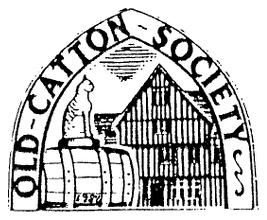At our March meeting we welcomed Michael and Frances Holmes with their talk entitled “Norwich Yards”.
In the Middle Ages Norwich was a rich city inhabited by many wealthy merchants. As they moved out to better conditions in the countryside (such as Catton) city landlords created very cheap housing for the hundreds of workers needed in local industry. Early examples are Wrenches Court, Old Barge Yard in King Street, and Flowerpot Yard with its weavers windows. These were slums with open drains running through the yards and communal toilets serving up to 22 persons.
By 1800 a population of around 110,000 workers lived in yards within the city walls. Many of the yards were built behind and were named after the public houses which were part of the same development. These included Arabian Horse Yard, Fairman's Yard, Key and Castle Yard, Labour in Vain Yard and Cardinals Cap Yard.
The presentation included video recordings of people who lived in the yards. Chris Baker remembered the narrow dark lanes and the smell of the honey-cart. Joyce Wilson of Fairman's Yard remembered washing under the outdoor pumps, bathing before the fire and washing clothes in the washhouses. The women gave each other a great deal of support especially when domestic violence occurred. There was a great deal of pride in the community.
By 1900 there were 750 yards in Norwich. Carnivals were held, doorsteps whitewashed and doorknobs polished. By 1920 the City Council realised that conditions were unacceptable. Slum clearance began and replacement housing was built in areas such as Mile Cross, Lakenham and Earlham. Some yards, such as Mandells Court and Bagleys Court were later transformed and can be seen today. Others have been converted to smart modern housing of character.
A walk through the city reveals many of the yard names still evident, often unnoticed by passers-by.
Anne Jones
